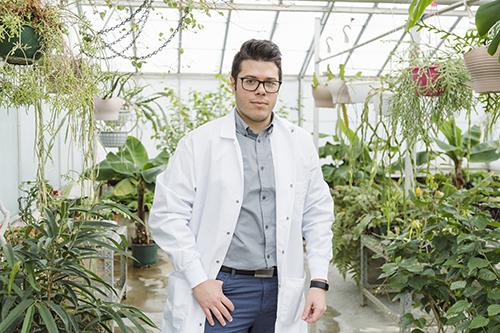
Credit: Edel Pérez-López
First described in the 13th century in Russia, clubroot has been affecting worldwide brassica production, including canola, broccoli, and black mustard, since. Clubroot is so tenacious because the casual pathogen produces resting spores that can survive in infected soil for decades, surviving harsh environments like cold winters and hot summers. It is also easily transferable from field to field when farmers share equipment.
In Canada, clubroot is a very serious threat to the $27 billion dollar canola industry. In the last ten years, clubroot has led to $500 million in losses. And while some Canadian provinces do a great job trying to trace the pathogen in canola fields, other fields, growing mainly Brassicas vegetables, have been overlooked, resulting in a growing clubroot infection.
“As a plant pathologist, my philosophy has always been to listen to the farmers. They know the problems that the scientists should try to tackle,” Edel Pérez-López, author of a paper recently published in Plant Health Progress, said. This attitude inspired him and his colleagues at the University of Calgary and the University of Saskatchewan to develop a new tool that will curtail the devastating effects of clubroot.
“ClubrootTracker is an interactive tool that will help farmers locate clubroot-infected areas and can be used by farmers, researchers, and industry and government representatives to share the clubroot status of their land,” explained Edel Pérez-López, one of the plant pathologists involved in the development of this tool. “We believe that the ClubrootTracker will be a gamechanger on the management of clubroot disease both in Canada and worldwide.”
The ClubrootTracker is the first tool that groups in one place the distribution of clubroot disease and while the team had the support of Saskatchewan Agriculture Development Fund and the Saskatchewan Canola Development Commission, Pérez-López pointed out that his team really didn’t need more than a computer and ideas to develop this new technology.
“There has been a widely positive response to the ClubrootTracker and many farmers and industry partners have showed interest in using it.”
###
This technology also has the potential to host the distribution of other plant pathogens affecting canola or any other crop. The authors have made the coding freely available to anyone who wants to use it or modify it for another pathogen or disease. To learn more, read “ClubrootTracker: A Resource to Plan a Clubroot-Free Farm” in the August issue of Plant Health Progress.
Media Contact
Ashley Bergman Carlin
[email protected]
Related Journal Article
http://dx.




